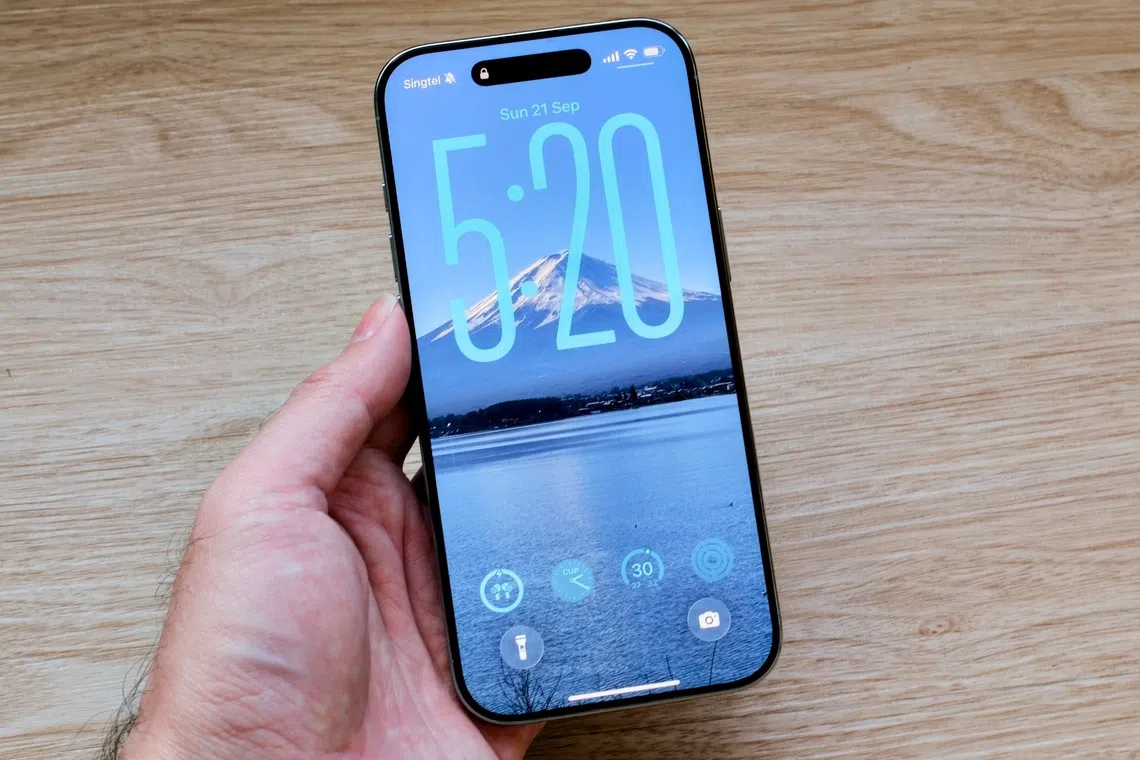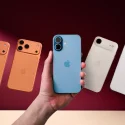There’s no doubt the iPhone Air is the most interesting new iPhone this year. It may not be the phone that most people will buy, but the engineering that has gone into making it this slim is fascinating. Ultra-thin devices used to mean making sacrifices and compromises, but after two weeks with the iPhone Air, I’ve found that that isn’t necessarily the case. The iPhone Air is a phone that defies expectations, and I think many people could be happy with it.
Design & display

It feels like you are using a piece of glass.
Photo: HWZ
The iPhone Air is one of those devices where the specs don’t paint the full picture. On paper, it doesn’t seem much thinner or lighter than a standard iPhone, but when you pick it up for the first time, you’d be amazed at just how slim it is and how little it weighs. It feels like no other iPhone and genuinely feels like a slab of glass. It also feels like a high-end item. Unlike the standard and Pro iPhones, which now have aluminium chassis, the iPhone Air’s frame is grade 5 titanium. Apple says titanium was chosen for its strength and lightness. There are four finishes to choose from: Space Black, Cloud White, Light Gold, and Sky Blue. Because blue is probably my favourite colour, Sky Blue is my pick.
For a phone that feels so delicate, durability is naturally a concern – those old enough will remember the iPhone 6 and “bendgate”. Apart from the strong titanium frame, Apple uses its new Ceramic Shield 2 glass material to protect the display, which the company claims is thrice as resistant to scratches. And instead of glass, the back is now Ceramic Shield, which Apple claims is four times more resistant to cracks than older iPhones with glass backs. Apple says the iPhone Air is the most durable phone it has ever made.
Now, such claims are hard to verify, but I witnessed the iPhone Air put through a bend test at Apple Park where it was subjected to 60kg of force. This is beyond what most people can achieve with their hands. Even though the phone flexed, it quickly returned to shape when pressure was relieved. More tellingly, a test by YouTuber JerryRigEvery showed that the iPhone Air only cracked after it was subjected to a force of 97kg – and even then, it remained functional. Despite its delicate appearance, the iPhone Air is a very strong and rigid phone.
Like the Pro iPhones, the iPhone Air has a prominent camera bar that rises high from the back of the phone and runs across its entire width. Apart from housing the single camera, the bar is also home to the main logic board. This frees up the rest of the phone for a large battery. It’s a clever design, but it also means the area heats up noticeably when the phone is doing anything that’s computationally intensive.

The camera bump now stretches across the entire width of the phone, and is actually used to house most of the phone’s components. Note also the somewhat muted Sky Blue finish.
Photo: HWZ
With its 6.5-inch display, the iPhone Air sits between the smaller 6.3-inch iPhone 17 Pro and iPhone 17 and the larger 6.9-inch iPhone Pro Max. This is such a great size, because it’s appreciably larger than the 6.3-inch displays of the smaller iPhones, but remains usable with just one hand. I think it’s my favourite size for a phone display. It has the same Super Retina XDR display with ProMotion technology and 3,000 nits peak brightness as the Pro iPhones, and it looks fantastic.
Elsewhere, the iPhone Air has the same buttons as the Pro iPhones and iPhone 17, and that means it has the Action Button, Camera Control button, volume buttons, and the side button. I’ve said this numerous times in the past, but don’t sleep on the Camera Control button. It can be really useful. The USB-C port supports fast-charging of up to 50% in 30 minutes, but only supports USB 2.0 data transfer rates of up to 480Mbps.
Camera: Is one enough?

Arguably, the biggest compromise of the iPhone Air is that it only has a single camera. Well, technically, it has two, if you count the front-facing camera, which is the very clever Centre Stage front camera. I wrote about it in greater detail in the iPhone 17 Pro review, so check that out. But essentially, it uses a square sensor, so it can intelligently crop and reframe depending on how many people are in the frame and if the user wants to take a selfie in portrait or landscape. Even though I hardly take selfies, I will concede that it’s an ingenious solution to the selfie problem, and I expect other phone makers to copy this feature.











